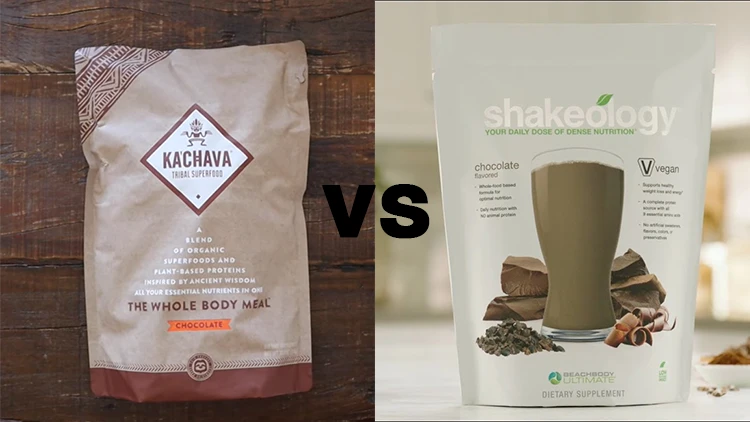
A personal trainer reviewed Ka’chava vs Shakeology to see which of the two premium brands comes out on top in regards to criteria such as nutrition (macro and micronutrients), flavors, price, ingredients and even affordability.1, 2
Either brand can be part of a healthy diet, but there’s a clear choice to pick when it comes to losing weight, building muscle, and staying healthy. Furthermore, we suggest picking this – LYFE fuel – an alternative brand that should at minimum be considered and is discussed below.
Comparison Between Kachava & Shakeology
Ka’Chava and Shakeology are both brands that aim to combine convenience and health through their meal shake brands. Either one can help someone achieve their fitness goals, but there’s also a great deal that makes them unique from each other.
Unlike Shakeology vs Slimfast, both of these brands are high-quality and impressively nutritious.
Ka’Chava is an all-vegan brand that relies on a blend of quinoa, brown rice, and pea protein for nutrition. While the starting price is imposing at $69.95 for a bag, a monthly subscription will cut that to $59.99 and a loyalty program will shave the price down further.
The calorie count is 240 per serving, which is almost twice as much as Shakeology. However, the difference is mostly protein and fat, not sugar and carbs. A high concentration of fiber is also a boon to Ka’Chava, as it reduces net carbs and contributes to improved gut health.3, 4
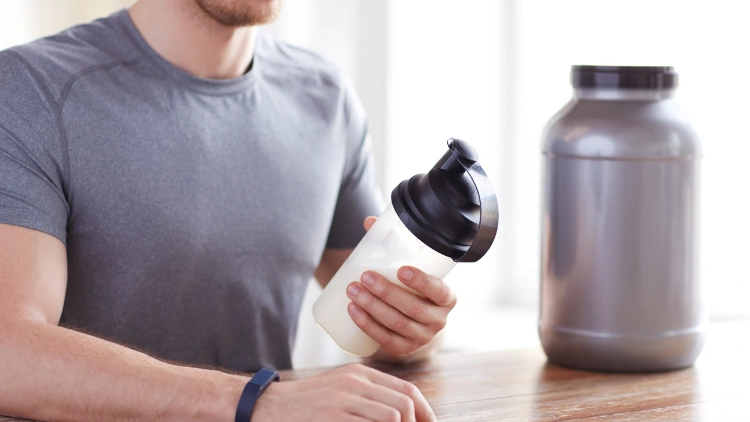
Source: SYDA Productions via Canva.com5
Shakeology originated as a project by a team of personal trainers and wellness coaches who wanted a better drink to help clients lose weight. This offers considerable insight into some of the unique aspects of the drink, such as its astonishingly low 140-160 calories per serving.
Within that low threshold, it provides 50-250% of the daily value of most vitamins and minerals. While a bag of Shakeology costs almost twice as much as a bag of Ka’Chava, it also contains many more servings.
Ka’chava vs Shakeology: Comparison Criteria
To make the comparison between Ka’Chava and Shakeology clearer, a personal trainer developed a straightforward set of criteria. Besides quality ingredients and solid nutrition, a diet plan needs to be financially practical and can’t feel like punishment.
This is why there are four key criteria to evaluate dietary supplements like Ka’Chava and Shakeology:
- Quality of Ingredients
- Flavors and Taste
- Overall Nutrition
- Price
Ingredient Comparison Between Ka’Chava & Shakeology
Ka’Chava and Shakeology have almost identical ingredient quality, both in regards to the vegan and non-vegan Shakeology flavors. Their pea protein is roughly as rich in amino acids as whey, both brands supplement it with other plant proteins such as quinoa.6
Both of the brands are almost fully organic, but there are artificial vitamins mixed in to increase the micronutrient counts that count against both.
Both of the two brands showcase impressive lists of superfoods in their ingredient list. In both cases, though, this is more for marketing than for real health purposes. The actual concentrations of superfoods generally isn’t enough to amount to an effective dose in a single serving of either Ka’Chava or Shakeology.
Since both are heavily vitamin-fortified, it also wouldn’t be advisable to consume more than one serving a day. Protein shake diet plans can be effective and successful, but it’s necessary not to eat multiple servings a day regularly or else risk conditions such as Vitamin D toxicity.7
Speaking of vitamins, Shakeology is marginally better than Ka’Chava in terms of sourcing. For instance, Ka’Chava relies on artificial cyanocobalamin, a type of B12 vitamin that doesn’t occur naturally.8
The same B12 in Shakeology is methylcobalamin, a naturally occurring version. However, Shakeology uses fructose as a sweetener while Ka’Chava mostly uses coconut, which is a more nutritious way to increase sweetness.
While Ka’Chava and Shakeology have considerably different recipes, the quality of their ingredients is roughly identical.
Flavors & Taste
While the flavor isn’t the most important part of a dietary supplement like Ka’Chava or Shakeology, it still matters. Many meal replacement shakes have a poor taste that makes it harder to maintain them as part of a healthy diet. Plentiful options and good taste can be a key difference-maker in practice.
Options & Quality at Ka’chava
Ka’Chava has a diverse, unique set of flavors that help them stand apart. Besides standard options like chocolate and vanilla, there are more exotic choices like matcha. The five Ka’Chava flavors are:
- Coconut açai
- Chai
- Matcha
- Vanilla
- Chocolate
While there are choices to go around, flavor just isn’t where Ka’Chava shines. In particular, the chocolate blend tastes overly sweet. It’s best to go with one of the subtler flavors, or to use Ka’Chava as part of a recipe.
Mixing it into a smoothie will provide the nutritional benefits while other ingredients can improve the taste.
Flavor Wise: What to Expect From Shakeology
Shakeology comes out far ahead in terms of flavors and taste. There are many more options available, with ten flavors in total. Six are vegan, while the other four are non-vegan and use whey protein.
- Cafe Latte
- Chocolate
- Strawberry
- Vanilla
- Vanilla Chai Vegan
- Tropical Strawberry Vegan
- Vanilla Vegan
- Cookies & Cream Vegan
- Chocolate Vegan
- Cafe Latte Vegan
Both chocolate flavors and the strawberry non-vegan flavors stand out as some of the best. That said, all Shakeology flavors have a tendency to take on a chalky texture and don’t mix easily. Using an electric mixer can help break up clumps of powder and improve smoothness, though.
Just like Ka’Chava, the Shakeology blend tastes best as part of a recipe rather than just blended into water.
Overall Nutrition: Comparison of Ka’chava & Shakeology
In terms of micronutrients, Ka’Chava and Shakeology are comparable in that they’re somewhat over-fortified with vitamins and that they under-concentrate adaptogens. The starkest difference and the deciding factor between the two is their macronutrient count.
Macronutrients & Micronutrients in Ka’Chava
Knowing the right time to drink protein shakes for weight loss and muscle gain is crucial because drinking them at the wrong time can render the protein ineffective. With Ka’Chava, the ideal time to drink is certainly half an hour or an hour after a workout.
With 25g of protein in a single serving, it has an ideal amount of protein to drink after a workout.9 However, that 24g of carbs wouldn’t be good to consume immediately before bed.
- 240 calories
- 7 grams of fat
- 25g protein
- 24g carbs
- 9g dietary fiber
- 7g sugar
While Ka’Chava isn’t going to be part of a keto diet, 7g of sugar and 24 carbs in a meal replacement shake is quite reasonable. What really stands out, though, is how dense the drink is with protein and fiber. According to studies on protein absorption, 25g is an ideal amount of protein to consume even after an intense workout.
Those interested in a keto-friendly option can enjoy Shakeology by choosing a low-carb meal replacement shake alternative.
Macronutrients & Micronutrients in Shakeology
To understand if protein shakes are good for weight loss, one should examine the nutritional profile of a serving of Shakeology. It delivers a fairly high amount of protein and respectable fiber content as well as high levels of vitamins, all in under 200 calories.
- 140-160 Calories
- 2g fat
- 16g protein
- 14g carbs
- 4g dietary fiber
- 7g sugar
Shakeology is a much lighter drink than Ka’Chava, with less than two-third the calories overall. Unfortunately, it still has just as much sugar and mostly loses out on protein and healthy fat.
Nutritional Winner: Ka’Chava for High Protein/Fiber Content
In some ways, Ka’Chava and Shakeology are more different than better or worse than each other. While Shakeology is much lower in macronutrients than Ka’Chava, it delivers an incredibly rich vitamin profile in a measly 130 calories. This gives Shakeology specific utility for those who are looking to hit their daily values on nutrients while keeping a steep calorie deficit.
However, Ka’Chava is simply more nutritious overall. Despite having almost 50% more protein and three times the fat, both have similar amounts of sugar. Not to mention, Ka’Chava has much more fiber, which improves gut health and broadens the gap between the two in terms of being satiating.
The only potential advantage to Shakeology is that it has even fewer calories than Ka’Chava, which will be important to many customers.
Price: Which Offers a Better Value?
At the end of the day, most people need to balance their health goals and diet against their budget. The companies that make meal replacement shakes often market them as time-and-cost savers compared to making a conventional meal, but quality brands always demand a premium price.
This is true of both Ka’Chava and Shakeology, as well. It would cost more than $100 for a month’s supply of either, so seeing which offers the better value is critical.
Ka’chava
Ka’Chava sells its loose powder in 15-serving bags, and there are currently no other sizes or options. However, customers have two choices as to how to buy these bags. The first option is to make a one-time purchase, while the second option is to subscribe for monthly shipments. In any case, buying two bags directly from Ka’Chava shaves down costs further with free shipping.
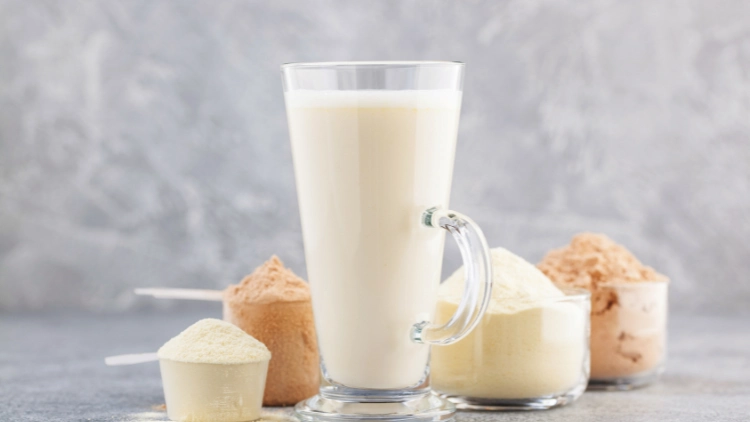
Source: MurzikNata via Canva.com10
A one-time purchase of Ka’Chava runs at an imposing $69.95, enough to have one serving every other day. This would be suitable to use Ka’Chava as a post-workout, but not enough to incorporate it into a person’s daily diet. A true monthly supply of Ka’Chava runs close to $140 each month.
However, the subscription cuts into that cost considerably. Users can cancel the subscription at any time, but as long as they remain enrolled they’ll receive a delivery every 30 days. These bags are down to $59.99, or less than $120 for a month’s supply. On top of that, return customers can take advantage of the Ka’Chava rewards program. Both subscriptions and one-time payments have a 30-day money back guarantee.
Shakeology
Shakeology has much more diverse products than Ka’Chava, with accessories, content, sample packages, limited edition flavors, and different sizes of bags. However, most of this is fluff that doesn’t necessarily contribute to Shakeology’s value as a health supplement.
The typical Shakeology unit is $129.95 for a 30-serving bag or 24 individual servings in a box. The bag is slightly more cost-effective than buying Ka’Chava without a subscription, but the subscription discount means that Ka’Chava pulls back ahead.
There’s also one major advantage that Shakeology has on the affordability front – the sample bags. Potential customers have the option to buy small bags of Shakeology to see if they like the way it tastes or if they can incorporate it into a nice smoothie recipe. While Ka’Chava offers lower prices on paper, it also gives first-time customers no choice but to take a major leap of faith.
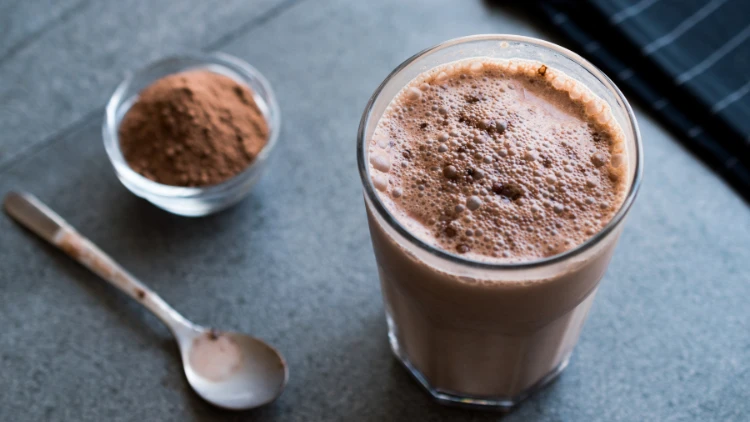
Source: alpaksoy via Canva.com11
These sample bags are the saving grace of Shakeology’s affordability, since people can at least know what they’re getting before making the major purchase. Sample packs offer 4-5 different single-serving flavors for about $5 per serving, which is only slightly higher than the bulk cost.
Best Value Comparison: Ka’Chava & Shakeology
Pricing between Ka’Chava and Shakeology is fairly competitive. While Ka’Chava offers a considerably lower price, this comes at the cost of having to make a much greater commitment. Overall, Ka’Chava wins on value. Not just because of the subscription discount, but because of the combination of lower price and a superior macronutrient profile.
While that $10 a month might not be much, Shakeology’s weaker macronutritional profile means it needs help catching up. Supplements like flax seed, chia seeds, or a nut butter are going to be necessary just to make Shakeology equally nutritious as compared to Ka’Chava. When it comes to comparing value, Ka’Chava vs Shakeology is extremely close but Ka’Chava barely pulls ahead overall.
Ka’chava Compared to Shakeology
Ka’Chava and Shakeology both boast excellent ingredients and high-quality sourcing, though there are a few minor exceptions. Shakeology stands out for its diverse flavors and low calorie count, while Ka’Chava excels in macros and value, making it the overall winner.
The table below breaks down both Kia’Chava vs Shakeology by criteria and the bolded sections indicate which one is the winner for a given criteria:
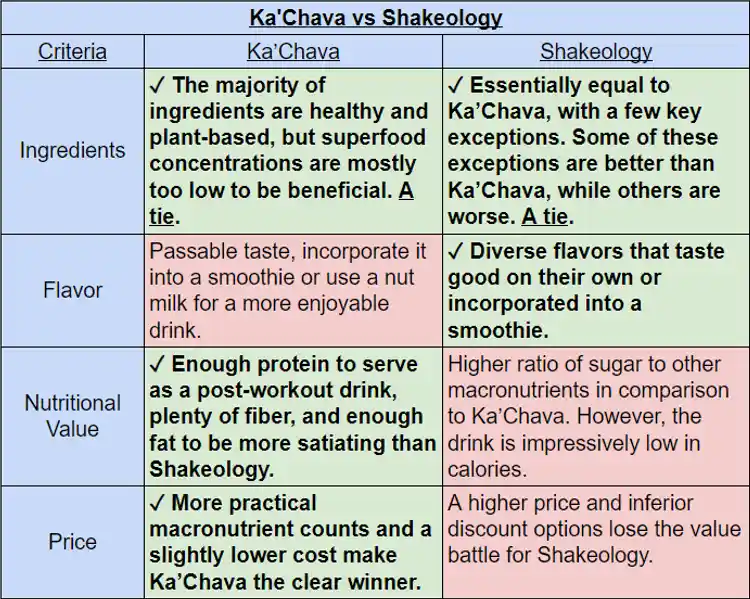
The Final Verdict on Ka’Chava vs Shakeology: Try LYFE Fuel Instead
While Shakeology is an excellent supplement in its own right, Ka’Chava is the overall winner thanks to a superior nutritional profile and better value. However, these aren’t the only options on the market.
LYFE Fuel is an excellent alternative that anyone should consider if they’re looking to lose weight. It clearly offers a better value, with a $3 per serving cost that’s about 30% less than either Ka’Chava or Shakeology.
It also provides more precise reports on micronutrients and healthy compounds, such as its estimate of 960 million CFUs of probiotics per serving. This inspires confidence in LYFE Fuel and indicates that in some ways, its nutritionists understand dietary health better than the competition.
If you’re looking for more Kachava alternatives, Huel is also a good option. Comparing Huel vs Kachava still comes with different pros and cons.
According to a personal trainer’s review, Ka’Chava and Shakeology are both respectable options a person can try when they’re just not losing weight with Herbalife. However, it’s not just about Ka’Chava vs Shakeology; LYFE Fuel is an outstanding, more affordable alternative with just as much nutritional benefits.
References
1“I Tried Ka’Chava For A Week | Does It Beat Real Food?” YouTube, 2 November 2021. Accessed 16 April 2023. <https://www.youtube.com/watch?v=y8ilYFW747c>
2“Shakeology: Change Starts Here.” YouTube, 25 February 2019. Accessed 16 April 2023. <https://www.youtube.com/watch?v=XAI-IFT1IZ0>
3Lattimer, J. M. (2010, December). Effects of Dietary Fiber and Its Components on Metabolic. Retrieved November, 9th, from Health. NCBI. <https://www.ncbi.nlm.nih.gov/pmc/articles/PMC3257631/>
4Tierney, A. (2021, May). Dietary Fibre Modulates the Gut Microbiota. NCBI. Retrieved November, 9th, from <https://www.ncbi.nlm.nih.gov/pmc/articles/PMC8153313/>
5SYDA Productions. Canva. Accessed 16 April 2023. <https://www.canva.com/photos/MABb1TdPkEI-man-with-protein-shake-bottle/>
6Banaszek, A. (2019, January). The Effects of Whey vs. Pea Protein on Physical Adaptations Following 8-Weeks of High-Intensity Functional Training (HIFT): A Pilot Study. Retrieved November, 9th, from <https://www.ncbi.nlm.nih.gov/pmc/articles/PMC6358922/>
7Asif, A. (2022, April). Vitamin D Toxicity. NCBI. Retrieved November, 9th, from <https://www.ncbi.nlm.nih.gov/books/NBK557876/>
8PubChem. (2022). Cyanocobalamin. Retrieved November, 9th, from <https://pubchem.ncbi.nlm.nih.gov/compound/Cyanocobalamin>
9Schoenfeld, B. J. (n.d.). How much protein can the body use in a single meal for muscle-building? Implications for daily protein distribution. NCBI. Retrieved November, 9th, from <https://www.ncbi.nlm.nih.gov/pmc/articles/PMC5828430/>
10MurzikNata. Canva. Accessed 16 April 2023. <https://www.canva.com/photos/MADm85CtjFE-protein-shake-powder/>
11alpaksoy. Canva. Accessed 16 April 2023. <https://www.canva.com/photos/MADaukHHJK0-chocolate-protein-shake-smoothie-with-whey-protein-powder/>